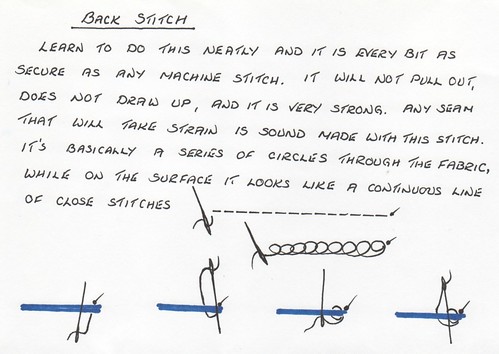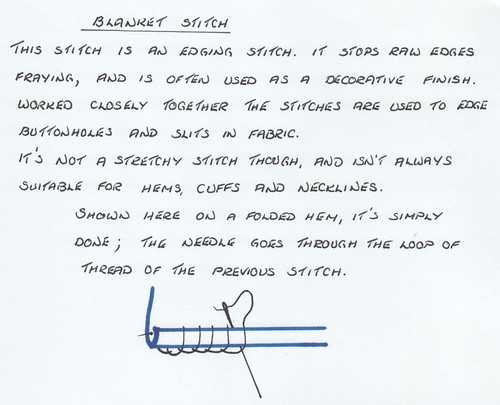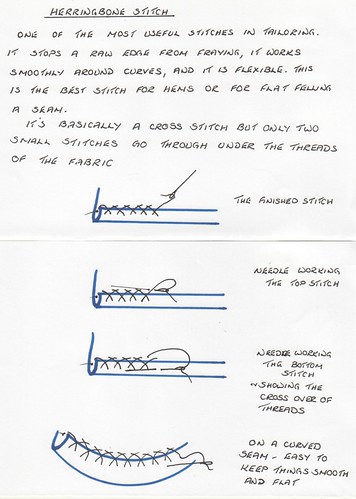I have had a pm from someone who'd just read this old thread. He asked if I would answer Indoorout's question....so here it is

I apologise for the dayglo photos, there are better ones on the second thread (I'll find a link)
Hi Toddy

This looks a great project! Just one thing though, could you explain the different types of stitch you used? I generally only sew leather and I don't think saddle stitch will work on these

There are four main stitches used in this kind of hand sewing.
I have sketched each of them and given a short explanation.
The first is running stitch;
Very straightforward, try to keep your stitches small and neat unless you intend to use them to gather up a width of fabric and then the stitch size makes the pleat size and you might make them longer.
Running stitch is usually done by working three or four stitches at once on the needle, but it can be done one stitch at a time (stab stitch). It isn't a fixed stitch, it will pull, but if you begin each needleful of stitches with a backstitch, the running stitch won't pull and it'll be a lot more useful.
The second is back stitch;
This is one of the most useful stitches to learn. It is secure, firm and very sound. It is used for seams where there will be any stress......like the seat of your trousers
 The third is blanket, or buttonhole, stitch;
The third is blanket, or buttonhole, stitch;
This stitch is the one that is used to edge the folded over hems of blankets, and stitched closely it edges buttonholes. However, it will stop a raw edge from fraying too. It's not particularly stretchy though, so it's not always suitable for hems, cuff and necklines. It looks best when worked with a consistant tension, and it needs to be securely finished off otherwise it has a tendency to unravel. Once a woollen edge has partially felted around it though, it'll not budge
 The fourth stitch is herringbone stitch;
The fourth stitch is herringbone stitch;
This one is simply the most useful hemming stitch of all. It's very flexible, can easily be sewn around a curved edge, will stop an edge unravelling, will secure a folded over seam without adding bulk, can be very lightly done so that no stitching shows on the outside of the garment, and it's ideal for wool



 It's a nice pale blue one, but I can't shift the stains, so I'll do some pieces with it and take photos to show the stitching, once I've put it through the machine. In this weather I'm using the tumble drier so that ought to shrink it even more tightly.
It's a nice pale blue one, but I can't shift the stains, so I'll do some pieces with it and take photos to show the stitching, once I've put it through the machine. In this weather I'm using the tumble drier so that ought to shrink it even more tightly.


